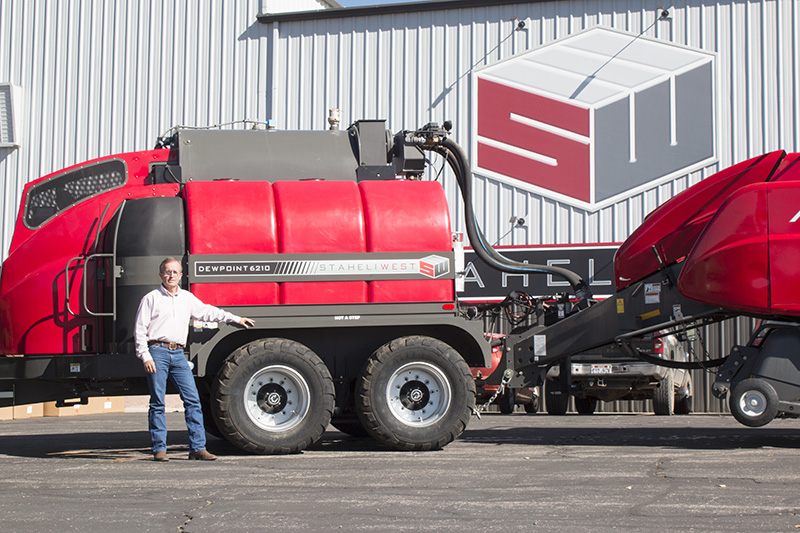
Originally published on July 12, 2016.
Dave Staheli’s career took an abrupt turn one day in the summer of 1994 at the local Taco Time. He was a newly married farm manager who was frustrated by the dry weather and how brittle it was making his hay.
Ordering a few tortillas, Staheli watched as the servers placed a few hardened tortillas in a small oven. After flashing steam on the tortillas, each was pulled out of the oven soft and warm. Then came the inspiration, if steam worked on softening tortillas, would it work on softening hay?
Rushing back to his farm in Enoch, Staheli took a handful of brittle hay into the kitchen, placed it in a hot pressure cooker, created some steam and after a few seconds, out came supple strands of hay.
“Seeing that effect I knew it would be revolutionary for the farming industry, so I started researching,” he said.
The research proved that the newfangled steaming method gave the necessary moisture to hay that is lost when farmers wait for the natural dew, which is necessary for high quality hay. “We are taking Mother Nature out of the equation,” explained Staheli. “But don’t tell her that, she may get angry at us.”
Staheli went on to clarify that the majority of hay growers wait for days, sometimes weeks, for the necessary natural dew to come in and soften the hay and add the essential moisture. This waiting also leads to high leaf loss, and for farmers that equals cheap hay.
Beginning in 1998, Staheli designed a few machines, all with a pencil and scrap paper, and manufactured a machine that injected steam directly into the hay to give the necessary moisture for high leaf retention.
Administrators at John Deere soon caught the vision and partnered with Staheli where they were able to prove through research with the University of Wisconsin that the method also added preservatives to the hay that would equal into more money per ton.
“I knew then that my steamer would work for farmers and I was going to get it to them,” announced Staheli.
With ideas in mind and hoping to graduate from the scrap paper he had been designing on, Staheli received vital help from Richard Cozzens, SUU engineering professional in residence. “I needed to learn how to do drafting quick, so Richard gave me a crash course and within a month I began digitally designing the new machine.”
By 2010 a newly designed DewPoint had been created and through a simple website 10 farmers were itching to try it out in their fields. So with the necessary backing the then small operation began sending out machines, putting the business on an upward trajectory that hasn’t stopped.
Since then Staheli’s business — now named Staheli West — has doubled its sales each year and in 2013 alone 80 DewPoints were sold. DewPoints are beginning to be found in fields across western United States, and are now cropping up in Australia, and soon to be Saudi Arabia, South Africa and Ukraine.
Each newly bought machine brings more satisfied farmers ranting about its effectiveness. Ben McIntyre, manager of McIntyre Farms in Caldwell, Idaho, one of the first farmers to incorporate Staheli’s steamer in his operations, said, “Our steamers help us make perfect hey in all conditions. I couldn’t manage my farm without one.”
Having farmers react in this way is the only thing Staheli needs, to know that he has been successful. He said, “Our purpose is to raise individual families and community standards while revolutionizing the agriculture industry. So that is why we do what we do. We don’t care about being rich and famous, we are just common people doing something that hasn’t been done before.”
David studied Engineering. Learn more about the program.
Tags: Alumni